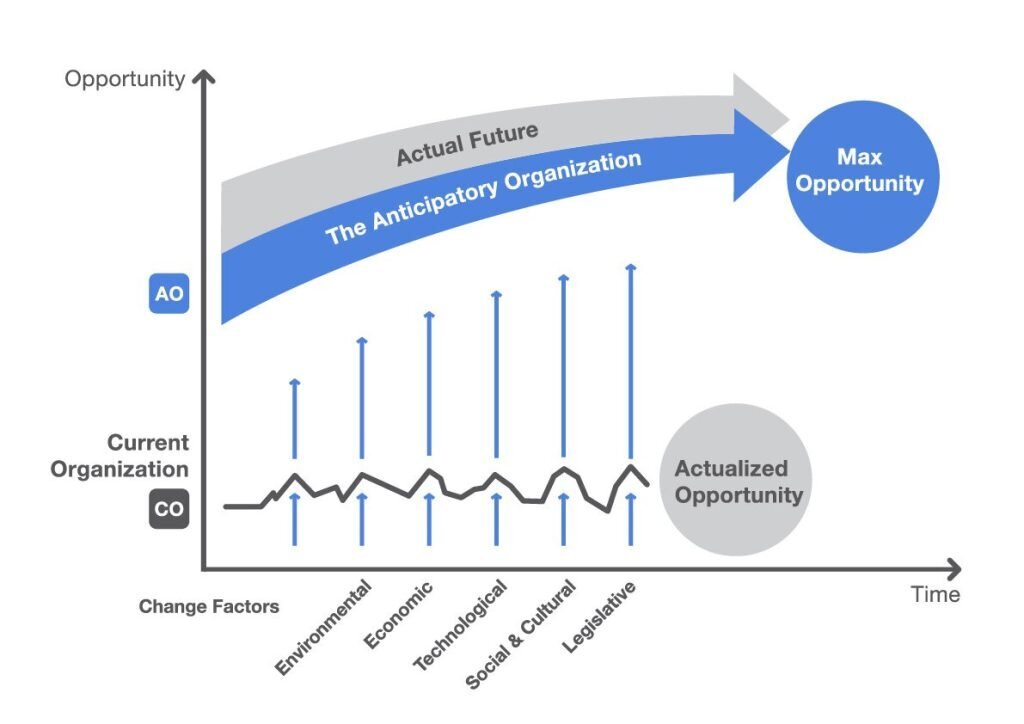TECHNOLOGY
Even the Highest Tech Business Operations Require a Human Touch

In a previous article, I wrote from my Opportunity Hour interview with Brad Peterson, CTO/CIO of NASDAQ, we spent time diagnosing what exponential growth means for businesses and organizations.
Not only that, but we also discussed the many ways to unlock exponential growth, or the nonlinear process it takes to obtain that level of accelerated advancement in your industry.
It is safe to assume that most business leaders and C-suite executives want to be positive in their outlook on exponential growth and how to attain it. They look at the opportunities in front of them as always being possible, especially if they are Anticipatory Leaders at Anticipatory Organizations. They assess Hard Trend future certainties providing them a roadmap to those opportunities and an ability to see potential issues.

However, what is more infrequently explored is the reality of the obstacles and constraints that leaders face when reaching for the world of exponential growth. On paper, all problems, obstacles, and constraints may seem easy to overcome; actually doing so separates the strong leaders from the ones that still have room for improvement.
Growth constraints are dynamic issues, but for today’s blog, I want to explore two main sectors that have common growth constraints all leaders must overcome. Doing so will make pre-solving problems with my Hard Trend Methodology simple and not just theoretically possible.
Human Constraints – People Are Imperfect, and That’s Okay!
Let’s be honest—human beings can only do so much. They need breaks, whether those breaks are a half-hour lunch, eight hours of sleep, or a two-week vacation to an all-inclusive resort.
You cannot push a human being to work 24 hours a day, 7 days a week, 365 days a year. This is a major constraint for a business or organization. This is especially true if a business or organization is trying to keep up with the rate of exponential change facilitated by the Three Digital Accelerators I have written about.

The Three Digital Accelerators of processing or computing power, bandwidth, and storage have been a force in allowing many tasks to quickly become automated by artificially intelligent software, machine learning, edge computing, and more. A company that does not look to these as Hard Trend future certainties and adapt them to help their human workforce will be left trying to outsmart them with agility—a fruitless effort when you consider these machines and software do not need a break.
Anticipating that technology will only continue to improve and advance allows you and your organization to be more productive without working your staff to death. Ultimately, you are saving your organization in doing so, as overworking employees will continue to drive them elsewhere, especially younger generations that are well versed in more disruptive, autonomous technology and working with those applications.
Technology Constraints – the Limitations of Hardware and Software
From reading that last section, you may be saying to yourself: “Simple! I will just implement autonomous software and put the business or organization into autopilot!”
I hate to burst your bubble, but this is not the answer either.
Machines and software are made by those imperfect human beings that we just discussed. Software and hardware have constraints just as human beings do. For instance, autonomous machinery that communicates with other autonomous machinery can break down, the software can freeze or glitch out, or worse, they can and likely will get hacked at one point or another.
In these cases of malfunction, I want to reference the human side of technology yet again. Repositioning your staff to be experts in troubleshooting based on both their understanding of the hardware and software itself and their knowledge of the tasks they once performed that those machines now accomplish makes them valuable assets to keep hardware and software running.
Aside from the systematic capabilities of hardware and software, no matter how intelligent they are, their major constraint is that machines do not have the creative critical thinking and sentience that human beings do. Not only does this limit their ability to fix themselves when errors occur, there are many tasks they cannot accomplish by not having sentience.

Refer to an example I brought up during my Opportunity Hour with Brad Peterson: musical instruments. A piano has a constraint—the number of keys on the piano are limited. But when you mix in the human element, there are unlimited ways those keys can be played! Humans think exponentially about how to implement hardware and software, unlocking exponential growth.
Looking Beyond Common Constraints
The bottom line here is that constraints and obstacles of all kinds that stand between you and exponential growth should never inhibit your ability to grow completely. These are solvable issues that you, as a human being with human teammates, can partner with technology to overcome.
It is possible to see glimpses into the future by utilizing the Hard Trends that you cannot change and Soft Trends that you can to your advantage. For instance, knowing that autonomous software is more prevalent than ever, you can play it like a piano, metaphorically speaking. The software does what it is programmed to do, but you can find creative, critically thought-out ways to implement it in your specific industry, at your specific organization, pairing it with the specific skill sets of your teammates.
Exponential growth cannot be obtained by relying solely on hardware and software, nor can it be achieved by ignoring the reality that these technological advancements are here to stay as a Hard Trend.
First, accept that there are new ways to accomplish old tasks. Then, absorb as much as you can about hardware and software transforming your industry and the world outside of it. Finally, think critically and exponentially about those disruptions and take control of them by leveraging another Hard Trend—the ever-expanding skills of your human workforce.
















You must be logged in to post a comment Login